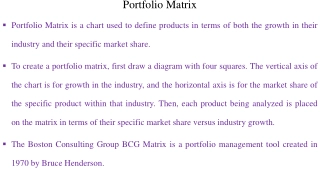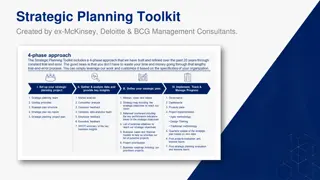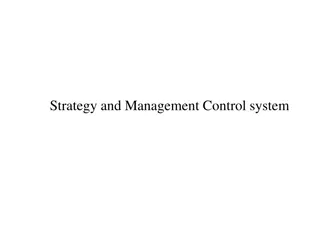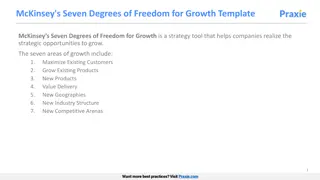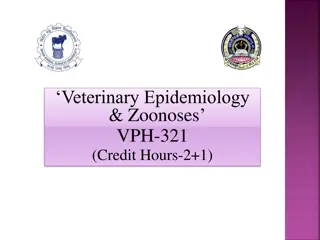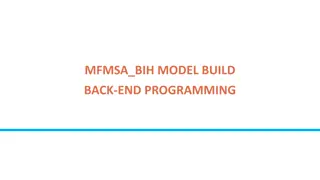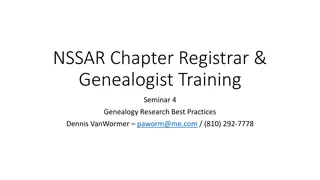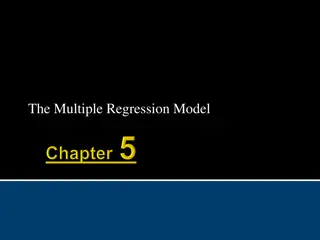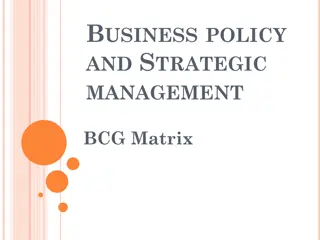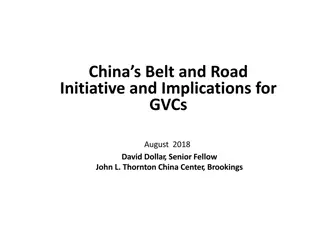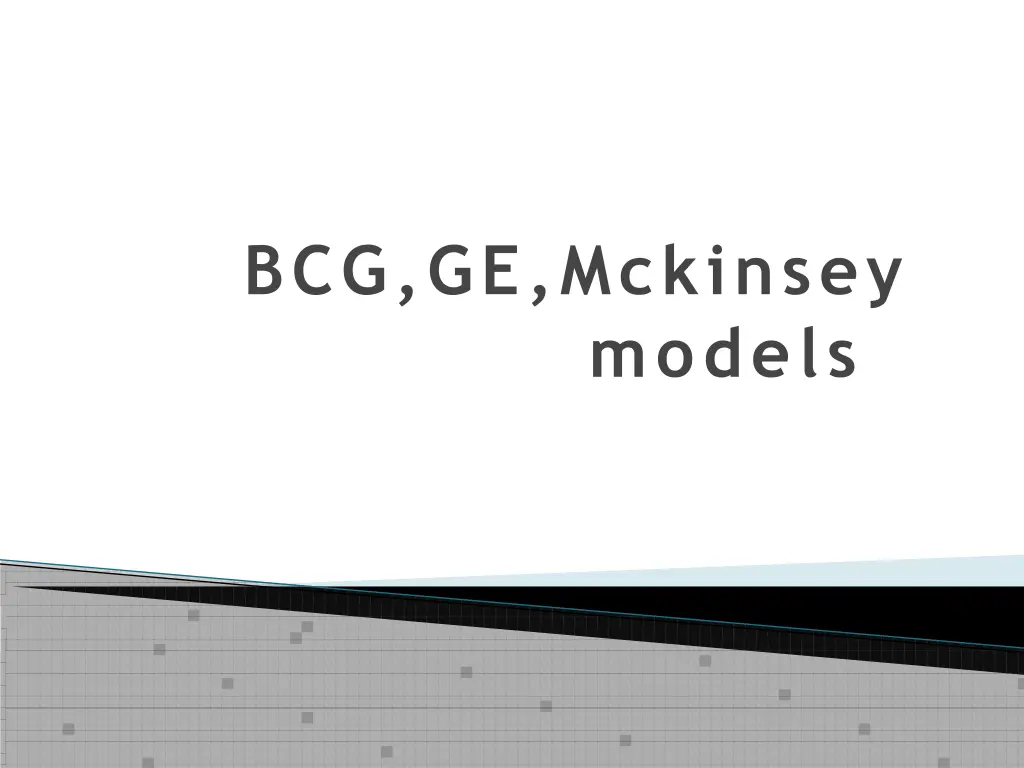
Models for Strategy Formulation
Explore the BCG, GE, and McKinsey models for strategy formulation, including matrices and frameworks to classify businesses based on market growth rate and industry position. Learn about the categories such as Stars, Cash Cows, Dogs, and Question Marks to understand how to allocate resources effectively in different business scenarios.
Download Presentation

Please find below an Image/Link to download the presentation.
The content on the website is provided AS IS for your information and personal use only. It may not be sold, licensed, or shared on other websites without obtaining consent from the author. If you encounter any issues during the download, it is possible that the publisher has removed the file from their server.
You are allowed to download the files provided on this website for personal or commercial use, subject to the condition that they are used lawfully. All files are the property of their respective owners.
The content on the website is provided AS IS for your information and personal use only. It may not be sold, licensed, or shared on other websites without obtaining consent from the author.
E N D
Presentation Transcript
BCG,GE,Mckinsey models
BCG, GE, Mckinsey Tools for strategy formulation 1) BCG matrix 2)GE matrix 3)7-S McKinsey model
Bcg --- Boston consulting group growth share matrix Market growth rate Firms relative position in the industry
Bcg Some firms may have high market share and some may have low market share. For some businesses, market growth rate may be attractive while in others the growth rate may be very poor
Bcg -- The matrix classifies business of a firm into four distinct categories on the basis of Market growth rate and firms relative position in the industry
Bcg -- Stars & question marks appear in high Market growth Star is a market leader and question mark is a follower
Bcg - Cash cows & dogs appear in low Market growth. A cash cow is a market leader while the dog is a poor follower.
Bcg -- Stars need good investment support since it operates in a high growth market. Stars normally do not bring in immediate profits but holds out great potential for the future.
Bcg -- Question marks unlike stars their future is uncertain. In addition they are in high risk category while stars are in the medium risk category.
Bcg -- Cash cows-- net generator of resources. Bring lot of cash to the company Brings higher profits. Do not need heavy investments. Industry growth is low so expansion possibility or need of investment is minimal.
Bcg -- Dogs Low industry growth and low MS. .--cash traps One or two businesses of company are stars, one or two may be cash cows, few may be question marks and few may be dogs.
Bcg -- The company has to decide what to do with each business. when the firm completes this exercise, the top managers are very clear about the analysis.
Bcg -- 1) what to do with question marks? 2)can few of them turn to stars tomorrow with the support of right investment & promotion? 3)What can be done to strengthen stars? 4)is the time ripe to totally milk any of the cash cow ? 5) which of the dogs should be sold out immediately?
Bcg -- Wokhardt- BCG matrix Stars-bulk drug business & export business Cash cows domestic formulation business Question marks animal health, diagnostics Dogs neutraceuticals, hospital division
GE MODEL GE MATRIX Any company can appropriately rate its different businesses for the purpose of strategic planning on the basis of two parameters industry attractiveness & company's business strength
GE model How attractive is the industry? How strong is the firm in the industry? The firms would like to operate in the most attractive industries and excel through its distinct strength.
Ge model Basic approach of GE model When the industry is highly attractive and the company has the best of strength for excelling in that industry, the business is rated as the most important one for the company. When the industry concerned is least attractive and the company's strength in excelling in that industry is very low, the business is rated as the least important one.
Ge matrix industry attractiveness 1) Industry potential 2)industries current size 3)industry growth 4)industries structure 5)industry profitability
Ge matrix company's (Enterprise) business strength 1) current market share 2)growth rate 3)differentiation strength 4)Brand image 5)corporate image
Ge matrix Divided into nine cells The upper left zone represent businesses that are most important to the company The lower right zone represents businesses that are least important to the company
Ge matrix The central diagonal zone represents businesses that are medium in their importance. Using the ratings in the matrix, the firm can appropriately set its objectives and strategies in respect of each of its business.
Mackinsey -7 s model -- used as an organizational analysis tool to assess and monitor changes in the internal situation of an organization Purpose 1)To improve performance and deliver the objectives 2)To maintain performance in the event of a change
Mckinsey-- If the elements need to be aligned and mutually reinforcing. This model helps identify what needs to be realigned to improve performance, or to maintain alignment and performance during any change. Types of changes restructuring, new processes, organizational merger , new systems, change of leadership ORG to perform well, these seven
Mckinsey7 S MODEL Strategy is the only element that determines the performance. Strategy is the final outcome of shared values and the latter is the outcome of system, structure, style, skills, staff.
McKinsey Strategy values shared skills staff style Structure Systems
Mckinsey7 S Strategy, system, structure Hard elements "Hard" elements are easier to define or identify and management can directly influence them eg- strategy statements; organization charts and reporting lines; and formal processes and IT systems. Shared values, style, skills, staff Soft elements "Soft" elements, on the other hand, can be more difficult to describe, and are less tangible and more influenced by culture.
Mckinsey Shared values --- what an organization stands for and believes in. This includes things like the long term vision of the organizations, its charitable ideals, or its core guiding principles. Eg-- the core guiding principle at McKinsey is Eg-Tata group core values Integrity, unity Toyota Motors---Integrity, Humility Staff refers to the number and type of people employed by the organization. Skills refers to the learned capabilities of staff within the organization. professionalism.
Mckinsey-7 s Style---- Style refers to the way things are done within the organization, that is, the work culture. A leader inculcates the work culture. Org do well because of good leadership and they fail because of bad leadership. what type of goal gets chosen by the organization will determine what type of leadership will fit
Mckinsey-- Strategy refers to the action plans an org has for the allocation & optimization of its resources to achieve specific goals. Structure refers to the shape the ORG would create to deliver its objectives. Eg Tall structure or a flat structure systems are the practices and procedures that an org uses to get things done, e.g. financial systems, information systems, recruitment systems

